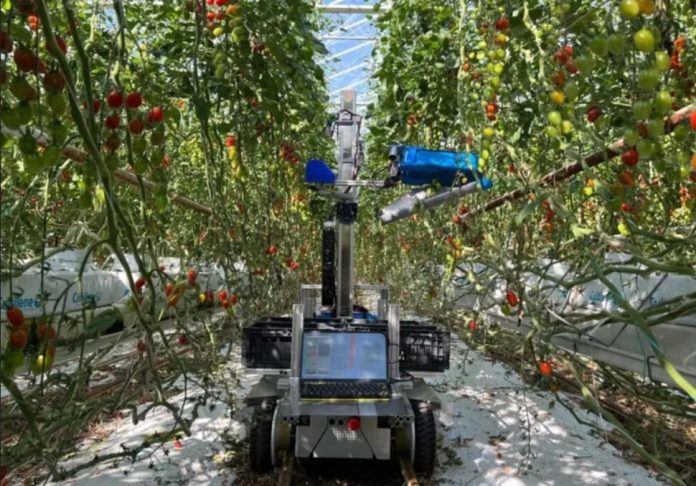News in brief: inaho Europe has developed a faster tomato harvesting robot that can harvest over 12 kilograms per hour, improving efficiency with cluster harvesting. The company aims to make the robot more cost-competitive compared to human labor and is part of the growing agricultural robot market, projected to reach $11.58 billion by 2025.
Robot developer inaho Europe has developed a new version of its tomato harvesting robot that is ‘eight times faster’ than the previous version. It now can harvests more than 12 kilograms of snack tomatoes per hour, the agri-tech company claims in a report.
The company is working with Dutch growers Nick Duijvestijn from Kwekerij Duijvestijn and Ferry Adegeest from TVA Growers to accelerate the development of the autonomous tomato harvesting robot. It is testing the upgraded robot in the greenhouses of the two Dutch tomato growers. The aim is to verify economic feasibility and further improve performance, see video below.
The addition of a cluster harvesting option improves the robotâs efficiency and speed. This option replaces the need for separate tomato harvesting. By harvesting a cluster of several tomatoes at once, the harvesting speed increases significantly. The company says it is committed to developing a concept with multiple robots for an affordable price.
This feat is possible thanks to a patent-pending technology that increases productivity by reducing the time it takes to harvest a large number of tomatoes.
The Japanese robot building company commented on some issues in the previous version. For example, it was difficult to build at costs that could compete with manual labour wages. However, the cluster harvesting feature makes the robot a more cost-competitive solution when compared to the cost of human labour.
The company has not priced the robots yet for better comparison to human labour. Although, we found that a typical human harvester picks between 30 to 33 buckets per hour, which is about 460kg, and charge approximately $18 to $20 hourly rate.
Agricultural robots have proven to be a valuable tool for farmers around the world and there main area of application today is at the harvesting stage. Emerging applications of robots or drones in agriculture include weed control, cloud seeding, planting seeds, harvesting, environmental monitoring and soil analysis. According to Verified Market Research, the agricultural robots market is expected to reach $11.58 billion by 2025.



